Mylar blankets – also called space blankets – are incredibly cool. They weigh just a few ounces, fold down to fit in your pocket, and can be used dozens of ways in an emergency. Mylar is so awesome that it has become synonymous with the term “survival blanket.”
But can a thin layer of aluminized plastic sheeting really keep you alive?
A lot of the manufacturer’s claims about Mylar are complete hype. However, if you know how to use a Mylar blanket, it can help you survive.
 Arcturus Heavy Duty Mylar Blanket
Arcturus Heavy Duty Mylar Blanket
Thicker than a standard disposable blanket and can be reused if treated carefully. Also comes with grommets for tieing down.
 Go Time Gear Emergency Blankets
Go Time Gear Emergency Blankets
Super small and lightweight, also decent value with 4 blankets per pack.
What Is Mylar?
Mylar is the trade name for biaxially-oriented polyethylene terephthalate (BoPET). It’s a thin sheet of plastic with a film of aluminum or another metal. The metal film is what makes Mylar so shiny.
Mylar was first invented in the 1950s by DuPont. However, NASA sometimes gets credit for inventing Mylar because they use Mylar on virtually all missions. You can read about Mylar’s history on the NASA webpage.
Mylar’s Reflective Properties
What makes Mylar useful for survival is that it reflects radiant heat. When radiant heat hits the shiny surface of Mylar, it will bounce off.
This can be used to redirect heat back towards the source. Or it can be used to direct heat away from an object.
For example, in 1973, NASA created a parasol-type object made from Mylar to reflect heat away from the Skylab. This prevented the Skylab from overheating.

Mylar is also often given to runners after marathons. Runners’ body temperatures start to drop quickly when they stop running. Mylar helps reflect some of their heat back to them and stabilize their temperatures.
Other Characteristics
In addition to being able to reflect heat, Mylar is waterproof and windproof. The waterproof quality means that Mylar can prevent heat loss from evaporation. That’s another reason Mylar helps runners stay warm after a marathon – we can lose 85% of our body heat during intense sweating because of evaporation!
The windproof property of Mylar is also beneficial. It will prevent heat from being carried away quickly by the wind (convection heat loss). We lose about 10-15% of our body heat from convection, so a wind barrier like Mylar can do wonders to keep you warm. (source)
But Mylar Is Incredibly Hyped Up!
Undoubtedly, Mylar is an excellent material – but it is not as good as the manufacturers would have you think.
For example, manufacturers often say that space blankets reflect up to 80% of your body heat. But this is misleading. Mylar will only reflect radiant heat. We only lose about 50% of our heat due to radiation. So, even if a Mylar blanket does what it claims, that is only 80% of 50% (a measly 40%).
Oh, and that’s only if you use the Mylar blanket to cover your HEAD since this is where most radiant heat is lost!
Yes, this will help keep you alive, but you will not sleep comfortably in a Mylar blanket if it is even slightly cold. In very cold weather, a Mylar blanket will just postpone hypothermia and death!
How to (Properly) Use a Mylar Blanket for Survival
If you want to stay alive (and comfortable) with a Mylar blanket, you need to know that: Mylar does not provide any insulation.
Yes, it will reflect some of your body heat, but if you are hypothermic, you won’t have much body heat to reflect!
Thus, you can’t just wrap a Mylar blanket around you like a regular blanket. Instead, you need to use one of these methods to make Mylar’s reflective properties work in your favor.
1. Use Outside of an Insulating Blanket
Mylar prevents heat loss from radiation, evaporation, and (because it is windproof) convection. Traditional blankets prevent heat loss from convection and (to a lesser extent) from conduction. Thus, combining a Mylar blanket with an insulating blanket will prevent all forms of heat loss.
To do this, wrap yourself in a wool or fleece blanket. Put the Mylar blanket outside of these blankets. For even more protection, you can use duct tape to sandwich a Mylar blanket between two wool blankets. You’ll stay toasty warm this way!
Recommended Reading: Best Survival Blanket
2. Create a Shelter
One of the best uses for a Mylar blanket is to make a debris shelter. The debris acts as an insulating layer, preventing heat loss from convection. The Mylar blanket lining the shelter blocks wind and prevents heat loss from radiation.
If it is winter and you have to make a shelter with snowy debris, the snow will start to melt as your body heat warms it up. Because Mylar is waterproof, using it to line the top of your shelter will keep the melting snow from dripping on you.
I find that a lean-to shelter or A-frame shelter is the easiest to make with a Mylar blanket. You can also see these survival shelter designs.
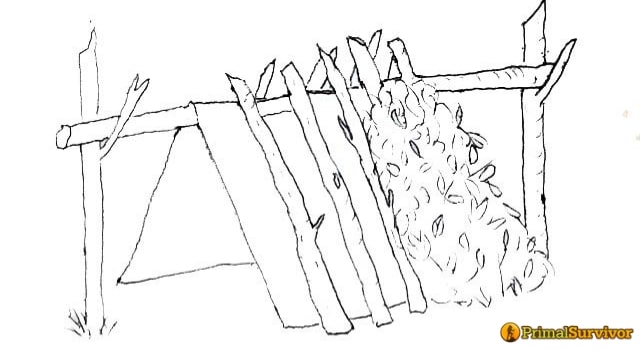
Step 1: Make a ridge pole using a long branch or stick. Your ridge pole can be between two tree branches or poles stuck in the ground.
Step 2: Place the Mylar blanket over the ridge pole. You can secure the edges on the ground by putting rocks on top of the edges. Don’t puncture the Mylar, or it will start to rip.
Step 3: Lean branches on your ridge pole over the Mylar blanket. These serve as the structural frame for your shelter.
Step 4: Add debris over your poles. The debris serves as insulation.
Step 5: Add walls to the sides of the shelter for extra protection.
**Note that cheap Mylar blankets tear easily and aren’t as large as a tarp. That’s why it’s a good idea to pay a few dollars more for a quality Mylar blanket and get one in a larger size.
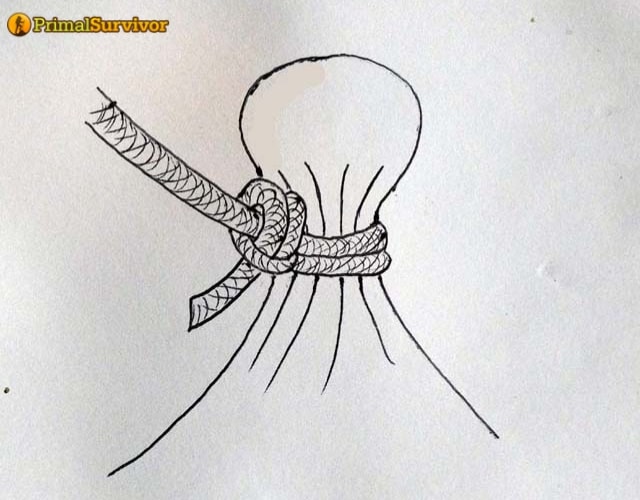
3. Use Mylar Blanket as a Ground Sheet
Mylar provides NO insulation. So, you can NOT just put it on the ground and expect to stay warm. The ground will suck the heat right from your body.
However, you can use Mylar as a ground sheet along with something that provides insulation (such as a bed of pine needles or other vegetation). The Mylar will help reflect some heat towards you. Since it is waterproof, it will also protect you from wet ground.
First, put the Mylar blanket on the ground. Then pile the pine needles on top of this. The pine needles provide insulation. The Mylar blanket reflects heat towards you. If you try putting the Mylar blanket on top of the pine needles, you’ll end up sweaty.
*A Mylar blanket works great when hammock camping. Put the Mylar blanket in the hammock, and then put your blanket or sleeping bag on top of that.
4. Mylar Blanket Fire Reflector
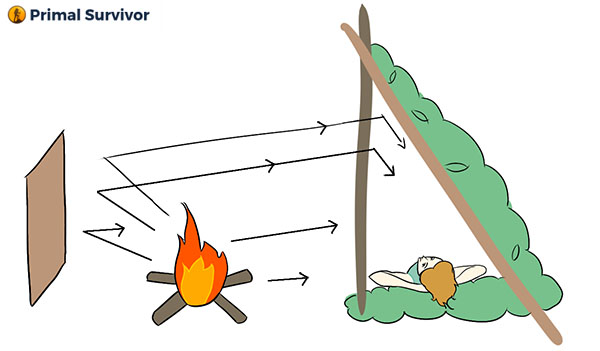
Knowing how to make a fire reflector is one of the fundamentals of survival. You set it up across from the fire. The idea is that the heat from the fire hits the reflector and bounces towards you. You’d be surprised how much warmer a fire is when you’ve got a fire reflector up.
Most bushcraft experts show you how to make a fire reflector using logs. A Mylar blanket is more effective as a reflector and easier to set up.
5. Mylar for Lining Your Shelter:
In addition to lining debris shelters with Mylar, you can also use them to line other types of shelters. For example, if you are stuck in your car in winter, you can line the inside with a Mylar blanket to stay warmer.
6. Staying Cool
You know those shiny metal sheets they sell for your car to keep it cool? A Mylar blanket works in the same way.
This would be great if you were trapped in your car on a hot day or had to make a survival shelter in the desert.
7. Solar Still
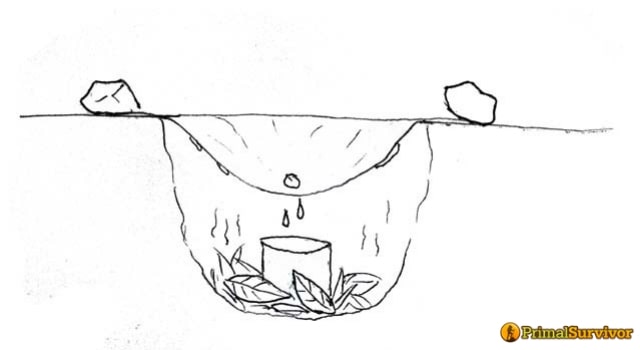
I have never tried this, but some bushcraft experts say that Mylar blankets work great as solar stills. A solar still is one of the smartest ways to collect water in a life-or-death situation. Just remember that the shiny side goes down when making a solar still! Read more about how to make a solar still.
8. Signal for Help
Because they are reflective, you can use a Mylar blanket to signal for help. Some blankets even come with SOS already stamped on them.
9. Lining Boots or Mittens
If your survival boots get wet, cut the Mylar blanket into two squares. Put them into your boots to line them. They will keep your feet dry.
The same also works for mittens – your hands stay hot with a layer of Mylar inside of them. Even better is if you use this layering system: Gloves, Mylar, Mittens.
Tips for Using a Mylar Blanket
- NEVER put a Mylar blanket right next to your skin. You need an insulating layer between you and the Mylar.
- Dry the Mylar blanket before using. Since it stops evaporation, sweat quickly builds up on Mylar. This will make you wet and colder. So, make sure you thoroughly dry the Mylar blanket before using.
- Beware of rips. Mylar is very durable. However, once it punctures, it will rip easily along the puncture line. Some experts like to carry a bit of duct tape with them in case they need to repair tears.
- Add a source of heat. If you are hypothermic, your body won’t have heat for the Mylar blanket to reflect. You’ll need another source of heat. Put something like a heated rock or a flask with hot water next to you.
Advice for Buying Mylar Blankets
Cheap Mylar Blankets Are Meant to Be Disposable
You can buy a Mylar blanket for ridiculously cheap. However, those super-cheap Mylar blankets usually won’t hold up for more than one or two uses. The reflective coating comes off easily. They also rip easily.
That isn’t to say that disposable Mylar blankets aren’t helpful. You can buy an entire pack and put them in your car emergency kit or have a bunch of them lying around the home.
But, if you want a Mylar blanket that can be used for wilderness survival, you don’t want something disposable. Pay a few dollars extra for a thicker, more durable space blanket.
Thickness
Thicker Mylar blankets are a lot more durable. They don’t get punctured as easily (which means they don’t rip as easily). The thickness also makes them easier to work with.
However, thickness has downsides: the blankets will be heavier and won’t fold down as compact.
Grommets
Some thicker Mylar blankets have grommets in them. This makes them much easier to use, especially when making a shelter or lining the inside. Remember that you can’t poke a hole in a Mylar blanket to thread rope through it!
Tunnel Shape
I find these Mylar blankets useless. Yes, the tunnel will block some wind and reflect some heat toward you – but you still don’t have any insulation. Get a larger blanket instead and learn how to make a survival shelter with it.
Double-Sided
For many survival uses, you don’t want a Mylar blanket to be double-sided (such as when making a solar still or desert shelter).
Color Choices
The aluminized side of the Mylar blanket will always be shiny. The other side can be any color. Some people prefer to have greens or other camouflage to stay hidden. Others may want a bright color like orange so the blanket can be used for signaling help. Think about how you’ll use it when making your color choice!
Best Mylar Blankets
Go Time Gear Survival Blanket
The best thing about this blanket is that it is only 3oz. It will fold down into about the size of a deck of cards. You can easily carry it in your pocket, and it won’t take up much space in an emergency kit or bag.
Lightweight does mean that the Mylar blanket is more prone to punctures and rips. You would still be able to use it in a pinch, though (but keep some duct tape handy if you need to repair it!).
Features:
- Four per pack
- Double-sided
- Waterproof and windproof
- Silver on both sides (suitable for emergency signalling)
- 12 microns thick – tears easily!
Arcturus Heavy Duty Mylar Blanket
These blankets are made from two layers of polypropylene and one layer of Mylar. They don’t list the thickness, but it is similar to a lightweight blue tarp. It will resist ripping better than your standard cheap space blanket!
Because the blanket is thicker, it can have grommets in it. I wouldn’t pull on these grommets too much – they might rip out – but you could still attach cordage to them for tying the blanket to your shelter beams.
Features:
- Multiple color options
- Grommets
- Made in USA
- 1 blanket per pack
- 22oz
- 3-layer construction
- Resists tearing
Survive Outdoors Longer (SOL) Thermal Bivvy
When it comes to Mylar blankets, Go Time is one of the most popular brands. They make good-quality products. The aluminum coating doesn’t flake off easily, and even the thin blankets resist ripping reasonably well.
If you primarily plan on sleeping in your Mylar blanket, then their Thermal Bivvy is the best option. It is lightweight at just 4.1oz but keeps you pretty warm. Of course, you can’t just put the bivvy directly on the cold ground (you’ll lose heat through conduction immediately!). However, if you make a bed out of pine needles or other debris, you’ll sleep fairly warm in the Mylar bivvy on top of this.
Features:
- Mylar material
- Bivvy shape
- Waterproof and windproof (including seams)
- 4.1oz
- 84″L x 36″W
- Packs down to fit in a pocket
- Stuff sack
- Emergency whistle
SOL All-Season Blanket
Here’s another Mylar blanket by SOL. Compared to other lightweight Mylar blankets, this one is durable and robust. They claim it is 5x stronger than other blankets, though I have yet to see anyone do formal testing.
The best thing about the blanket is that it has 4 very sturdy metal grommets. You can use the blanket as a tarp, but with the radiant heat benefit. It weighs 16oz, which is a bit heavy for a Mylar blanket, but that’s why it is much more durable.
Features:
- 16oz
- Durable construction
- 84×60″
- 4 grommets
Have you used a Mylar blanket for survival or camping? How did it go? Let us know in the comments.
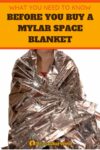
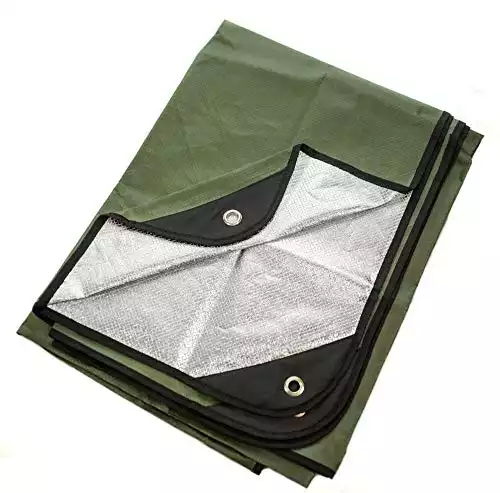
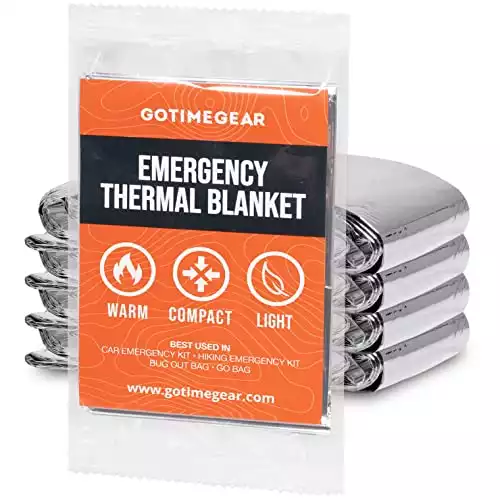
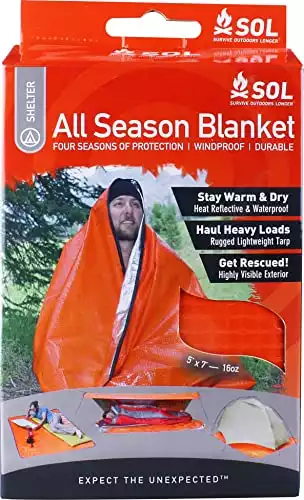
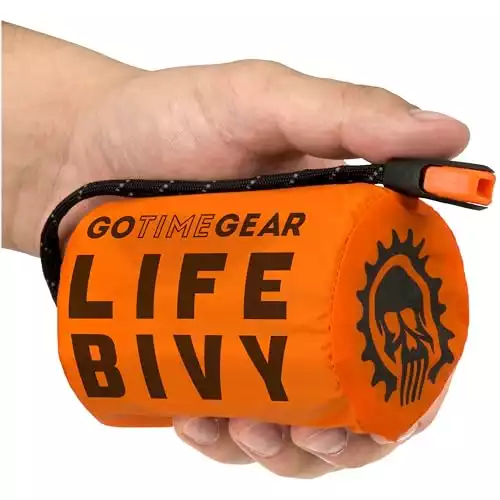




Another thought: clearly, bigger is better. Unless you left it home because it’s bulky and you’ll “only be a couple of hours”.
For me, the 5 x 7 is big enough to be effective and small enough to take everywhere.
The more remote the area, the more you carry. So if you do a variety of hiking, I’d think you need a couple of sizes.
Good article, the first time I used one in an unplanned night out, I used it incorrectly and thought they were useless. Since then I’ve done a number of practice bivouac nights with the vehicle nearby and I strongly, strongly recommend doing that.
– one more downside is that sparks from your fire will put holes in it. Having brush over it is good protection but makes it invisible to searchers.
– visibility is essential but: Bear biologist Tom Smith has noticed that bears tended to check out his brightly colored tent but not a less visible one, so if I’m in grizzly country I’m going to consider that. Elsewhere, visibility wins hands-down.
– Sometimes you don’t have the daylight or the materials for much of a shelter. Squatting on a pile of brush with my back against a tree and the Mylar thrown loosely over me and tucked in as well as I can; that has allowed me to catch a few bits of sleep during a long, boring but survivable night.
Great comments! Yes, knowing how to use gear is incredibly important and most people unfortunately don’t bother to test their survival items out.
I am wanting to create mittens for the homeless and I thought it would be a great idea to add a piece of emergency blanket in the layering of the mittens, by what I read on here it would be a great idea ! Any other suggestions ?
Providing that the raw edges are taped, can Mylar blankets be cut?
I care for several semi-feral cats. In the colder months I put out plastic totes for them to keep warm in. (entryway is cut out with a plastic flap covering it.) My evil plan is to cut the blanket into panels to line the sides and the top or bottom of the tote, using spray adhesive to keep it in place. Straw or other bedding material will be put on top.
Would it be wise to not line either the bottom of the tote or the lid? I don’t want to overheat the cats.
Thank you!
I wouldn’t line the bottom with a space blanket, simply because it tears fairly easily. I don’t think it would survive the cats’ claws. The top and sides should be fine. You really don’t have to worry about the cats overheating from heat reflected back at them (space blankets unfortunately don’t work that well!).
For tent camping in the cold- I used spray adhesive to line the walls and top screens of my tent to hold in the heat. Worked like a dream and made my heating fuel last so much longer 🙂
The best article I have ever read regarding Mylar…thank you!
Super useful article! Any advice specifically for using mylar in pet beds for outside pets during winter months? Obviously the cat or dog will be on top of the mylar blanket, not under. Would you line the bed with mylar and then put a regular cushion or blanket?
In that case, I’d actually put the Mylar on the top of the pet house so it reflexts heat down. For the bottom, you’d be better off putting some foam camping pads on the ground. In very cold weather, humans need R-3 or R-4 to stay warm sleeping on the ground. The R value on the cheap foam pads is usually R-1. But if you fold them then you get R-2. Maybe a cushion on top of those pads so the pet doesn’t claw through them.
Thanks, Diane!
I am using a layer of straw, foam , mylar and an additional layer of straw over that for the inside of my chicken coop. I have a waterproof tarp over the top. It is down to around zero outside tonight, so I am wondering if they will be ok? (They are Rhode Island Reds and bred for cold weather but I still worry).
Shoot, I thought these could work as a super thin blanket on an airplane. So, no? That would be cool (although shiny and loud).
I travel by Van a lot, and use a bench seat for a bed.. I use a Mylar blanket over the entire bench with a down comforter covering it all and my sleeping bag on top..
I carry a second blanket to put over if I need it.
A huge difference in the amount of gear I carry for comfort.
Great article. Thank you! Question: For cold situations, I follow your logic about insulation and placement of the mylar to keep the heat in. Is there a way to assure that when the sun is shining (in winter cold), the sun’s heat is allowed to get in? Is it a given that one-sided type – shiny side in – will allow sun’s heat inside?
Good question about sunlight and warmth.
From what I know, it won’t let sunshine through. If the sun is shining, then you should be moving around to stay warm. That’s your best solution. Or, you’d be better off making a fire. Put the space blanket behind you so it bounces the fire heat back on you. Also, always make sure you set up your shelters with the sun’s direction in mind. You want to get maximum sunlight exposure, so the opening should be facing the morning sun.
sorry but i’d say that’s BS. the heat from the sun will heat the shelter in any case, provided the shiny side is on the inside, not the outside. of course your best bet is to go out and test it for yourself in a non-survival situation.
Hmmm… seems like there was a misunderstanding. Sunlight doesn’t really do much to heat up a shelter — especially in night (during the day your best bet is to move around to stay warm, not huddle in a shelter).
In cold weather, you generally want to make one of two types of shelters: a tiny A-frame shelter with lots of debris on top to trap your body heat. Or, if you have access to wood, a lean-to type shelter with its open side facing a fire. With a fire reflector on the opposite side (reflector-fire-shelter) and a Mylar blanket on the back wall of the shelter to aim the heat towards your body, you can stay pretty warm. In this case, having the shelter setup to face the morning sun is great. The fire will have dwindled down by morning but you at least get some warmth from the sun.
Q: What is the pore size in Microns? Have mycotoxin illness/cross contamination and hoping to safe mattress, other possesions… or in the move.
Not sure on that, you would have to check each manufacturer individually as they will all be of a different spec.
Did you ever find best one for mcs?
Great article, I’ve often wondered about mylar blankets and had seriously considered the hype as factual. You may have saved a life. Thanks, Bill
When I first got a Mylar blanket, I put it on top of my bed sheet, quickly cooked, took it off and put it on top my blanket…Quickly cooked again!! So put it on top of my second blanket, which I rarely use, taping it down with wide masking tape…Ahhh! works great when I get cold enough to pull on that blanket!! Absolutely love it!!! When my cleaning lady got done yesterday, I noticed a huge tear right in the middle, I grabbed some tape, but decided no way!! I just put on a new blanket!!!